RAF Thorpe Abbotts
In February (2014) I was fortunate enough to get invited by Waveney Valley Community Archaeology Group with the permission of Lord Mann on a reconnaissance mission for a project they are doing on studying standing buildings on the site of Thorpe Abbotts airfield; A Second World War RAF base which was handed over to the US Eight Air Force in 1942 becoming heavy bomber Station 139.
Thorpe Abbotts sits on the Diss – Harleston Road in Norfolk near the border with Suffolk. It is a vast piece of land housing fifty aircraft hard-standings and two hangers, a hospital and accommodation areas for four squadrons, 349, 350, 351 & 418 Squadrons of the 100 Bomb Group flying B17 Flying fortresses out across Europe in the second half of the war. With a ground crew of twenty six and a flying crew of either nine or ten per aircraft, we can estimate that crew alone on the base would have numbered around 1,800, plus staff and administration, hospital, fire crews, maintenance and so on you are looking at a small town suddenly appearing in the landscape.
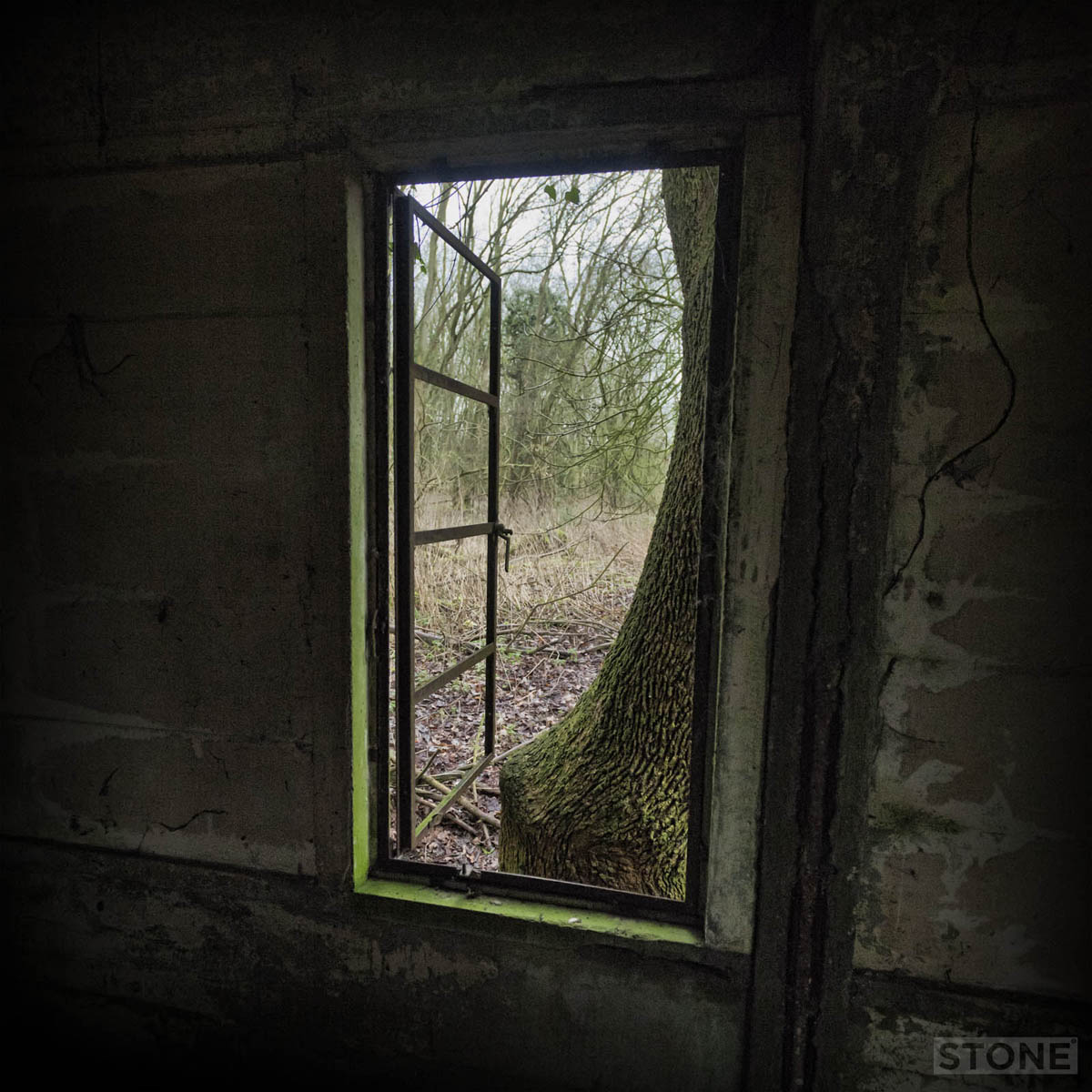
Thorpe Abbotts is still there, or a large percentage of it is, including standing buildings, there is a strange nature to these places, it’s confusing, you stumble across materials and building remains which don’t seem to make sense, and even with a plan of the site we found it quite difficult to work out where certain things have gone or where they should be. The obvious remnants are the control tower, which is accessible and houses a museum, parts of the runway and elements of the perimeter track intact or hidden in the road plan of the area.
The standing buildings include some of the more sturdy accommodation and administrations areas, the water towers and a pumping plant. The T2 Hangers have vanished and a lot of the Nissen huts are collapsing into whale skeletons of rusty corrugated iron and peeling tar paper skin, home comforts opened up to the elements for 70 plus years slowly vanishing in the rain.
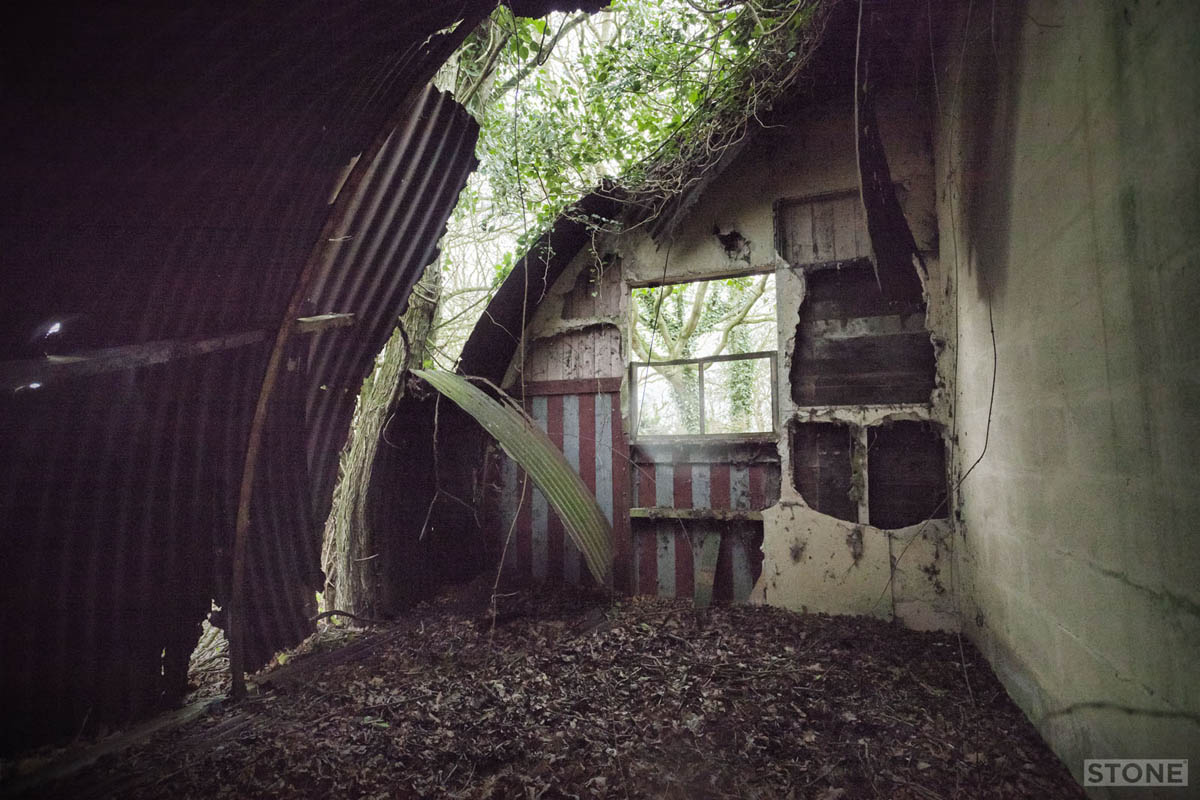
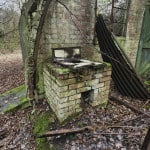 Despite the degradation of the standing elements in these places the connections are still here; a standing wall with once bright painted stripes, now dulled by time, a washroom with faded blue paint and later graffiti scratched into the plasterboard, Dawn and Hazel were here in 1957, sneakily smoking or waiting for boyfriends in the quiet countryside. Cigarette butts and empty cans attest to the attraction of this private dilapidation to the younger nocturnal population. There’s burner marks on the walls of one block which could be a cook area, a traced shape on another wall looks like it once housed a squadron logo of some sort. concrete troughs on floors show the position of wood burners the men and women would have huddled round in their thin skinned temporary homes fighting off the cold and wet outside waiting to fly, playing cards, reading books and eating food. All the windows have gone; metal frames hang open, in one case open for so long a tree has grown up so it will never close. The floors are covered in shattered concrete, old feed and the detritus of modern farming. On the perimeter of a field edge a gun emplacement tips and powders away, an old medicine bottle discarded nearby sticks out of the plough shattered flint in the soil.
Despite the degradation of the standing elements in these places the connections are still here; a standing wall with once bright painted stripes, now dulled by time, a washroom with faded blue paint and later graffiti scratched into the plasterboard, Dawn and Hazel were here in 1957, sneakily smoking or waiting for boyfriends in the quiet countryside. Cigarette butts and empty cans attest to the attraction of this private dilapidation to the younger nocturnal population. There’s burner marks on the walls of one block which could be a cook area, a traced shape on another wall looks like it once housed a squadron logo of some sort. concrete troughs on floors show the position of wood burners the men and women would have huddled round in their thin skinned temporary homes fighting off the cold and wet outside waiting to fly, playing cards, reading books and eating food. All the windows have gone; metal frames hang open, in one case open for so long a tree has grown up so it will never close. The floors are covered in shattered concrete, old feed and the detritus of modern farming. On the perimeter of a field edge a gun emplacement tips and powders away, an old medicine bottle discarded nearby sticks out of the plough shattered flint in the soil.
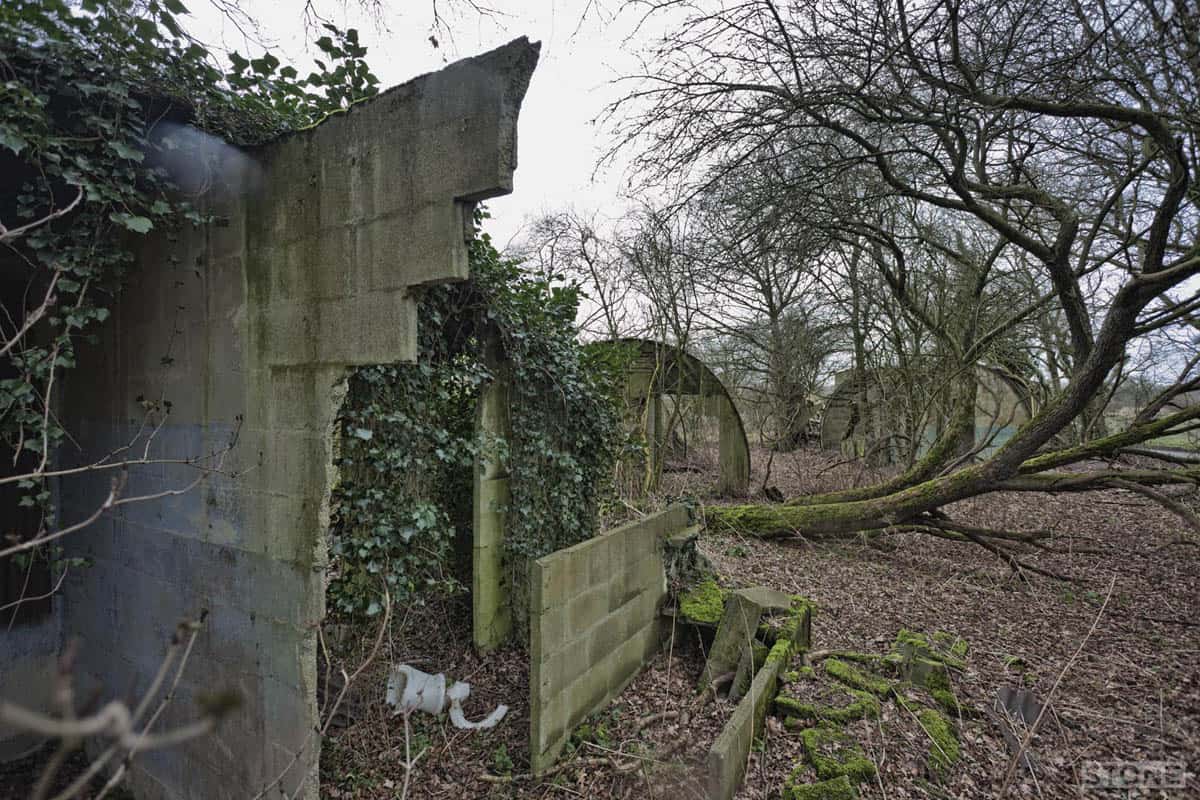
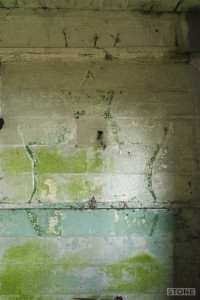 The lower site is covered in heavy brick built blast shelters, we gave up counting these ten-a-penny lifesavers all gradually sinking into the moss and being buried by leaf mould split not by bombs but by the slow weave of tree roots and expanding trunks pulling them apart. Ice and damp, the freeze thaw slowly fractures brickwork, chipping away the edges of the remains, reducing the built back to component parts.
The lower site is covered in heavy brick built blast shelters, we gave up counting these ten-a-penny lifesavers all gradually sinking into the moss and being buried by leaf mould split not by bombs but by the slow weave of tree roots and expanding trunks pulling them apart. Ice and damp, the freeze thaw slowly fractures brickwork, chipping away the edges of the remains, reducing the built back to component parts.
Soft edged drainage ditches curve off into the trees encircling the ghosts of more huts, you can trace the walls as ridges in the soil, see patches of concrete de-laminating, the vestiges sticking through the leaves, spot elements of water supply. The lower admin area sits on the edge of a once metalled drive, now covered in several inches and plenty of years of leaf fall, the huts with strange wooden wings are overgrown, piping and wiring sticks out here and there, and old brick built cooker still in place, bits of paint peel off everything in the damp. The round hood of a 1950s car rests nearby, grown over by thorn bushes slowly rusting into a metal signature in the ground.
The water pumping station is remarkably intact, still containing the imprint of wiring and fuse boards, parts of the towers re-purposed into storage for feed and fitted with owl roosts. Over towards the medical area the hospital has gone, replaced by pheasant feeders in the woodland, established trees grow in what was once a clearing, there’s no visible evidence except a toilet block leaning heavily into it’s eventual collapse, a few remnants of cracked urinals and sinks still cling to the brickwork all oddly out of kilter with the natural woodland around it.
We drove slowly along part of the perimeter past the now non-existent bomb dump and shooting butts off in the woods, stopping to stare through the descending gloom at the runway’s vanishing point.
These places are fascinating; something so huge, not just in physical size but in human significance and numbers; where so many people lived and took part in a particular series of events that shaped modern Europe and the world can visually almost cease to exist so quickly if ignored, nature and human occupation removing the past.
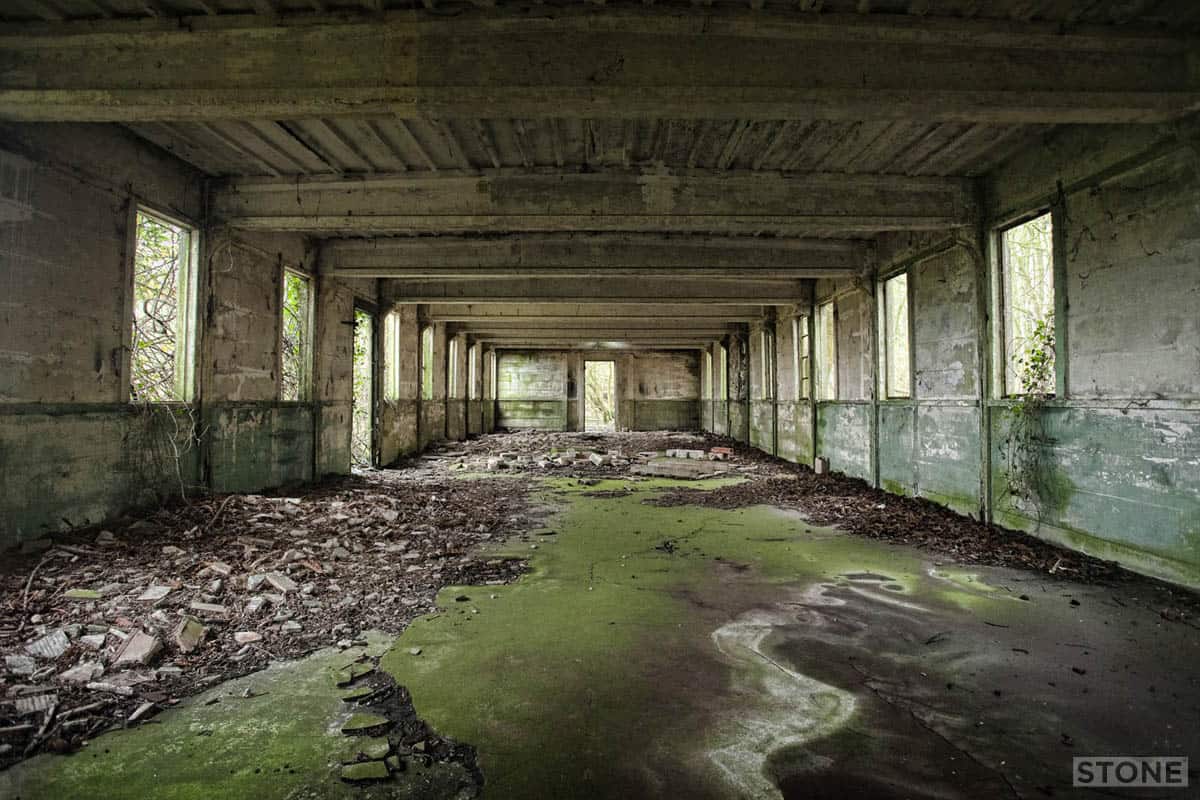
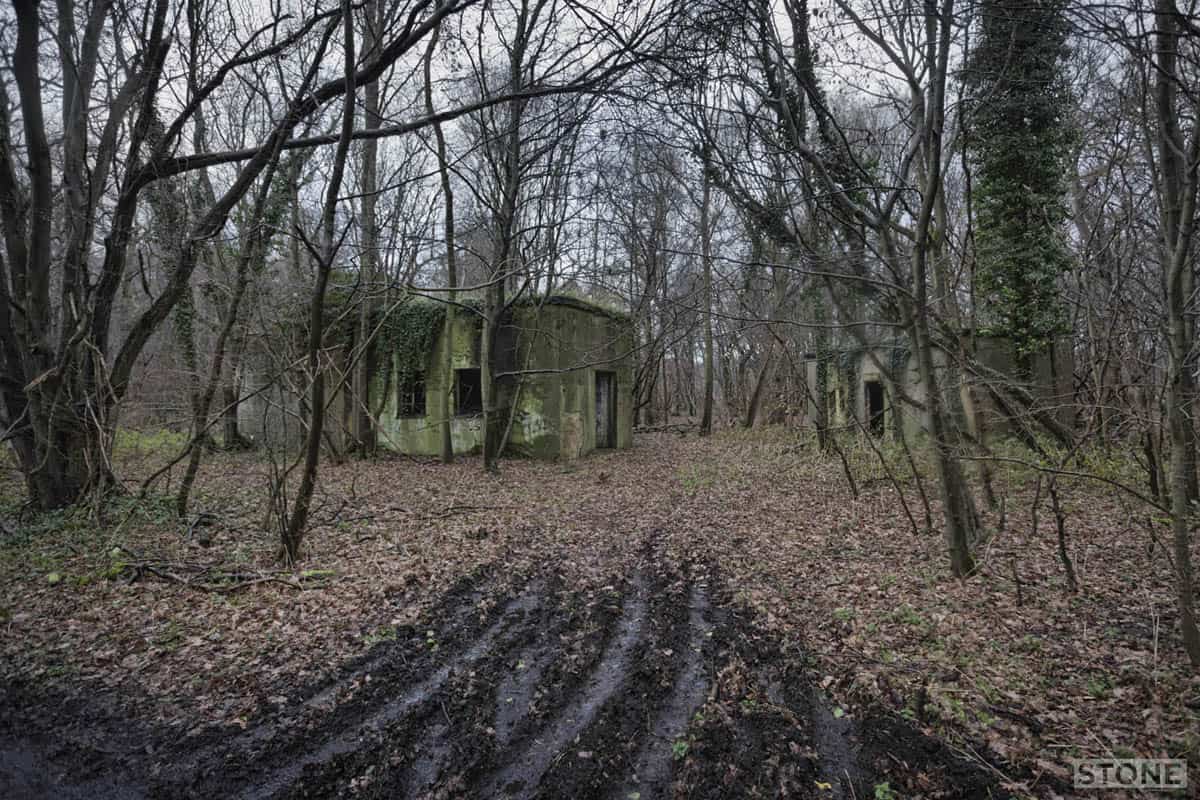
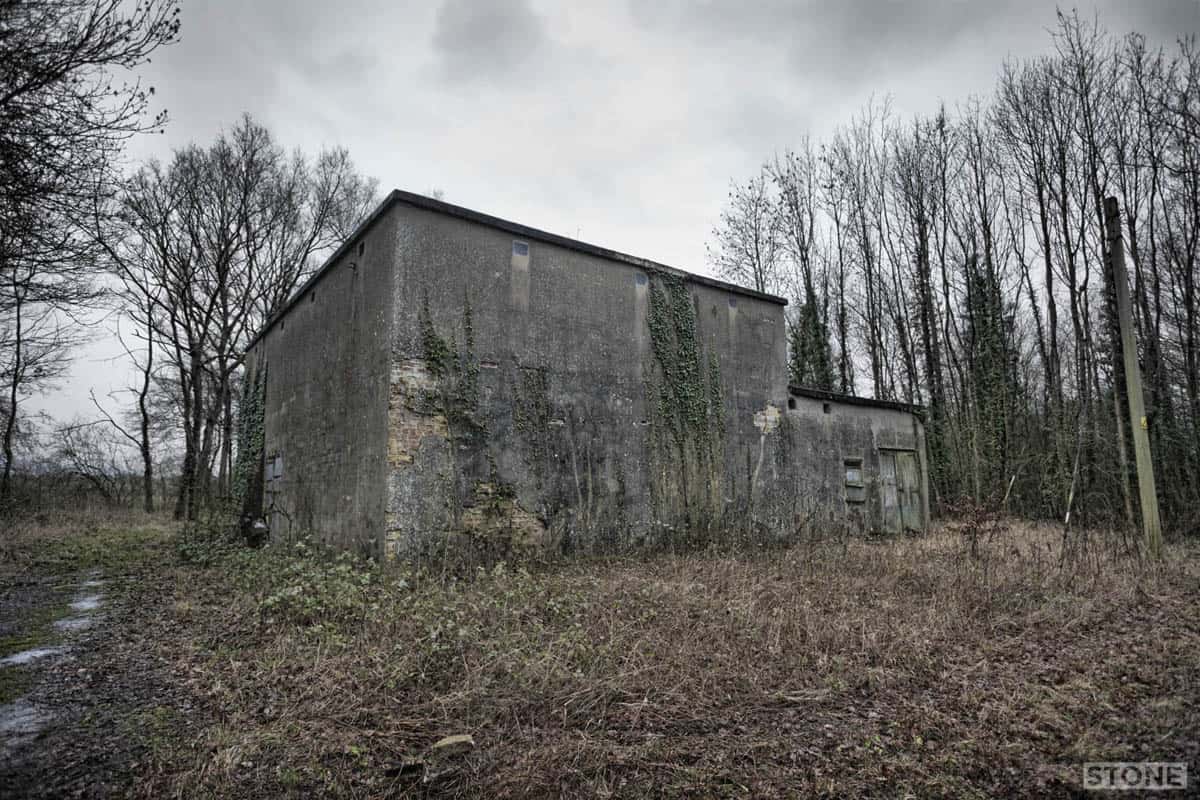
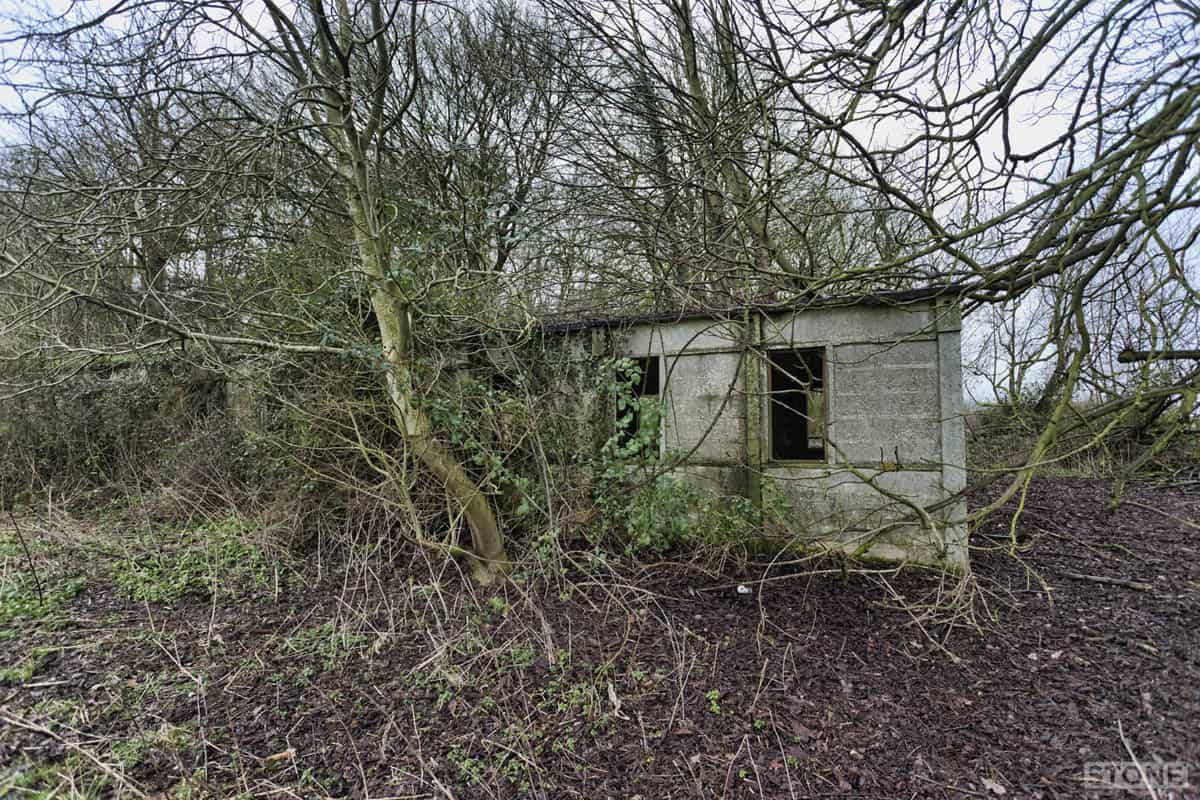
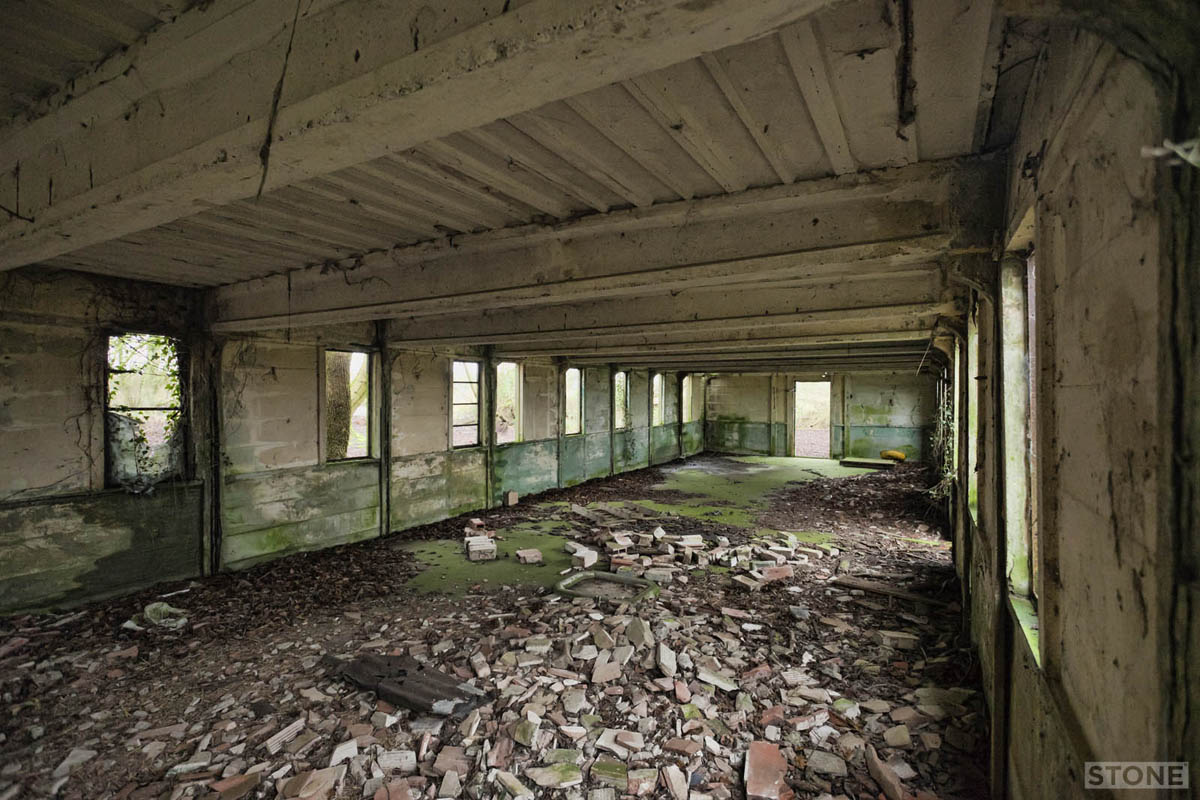
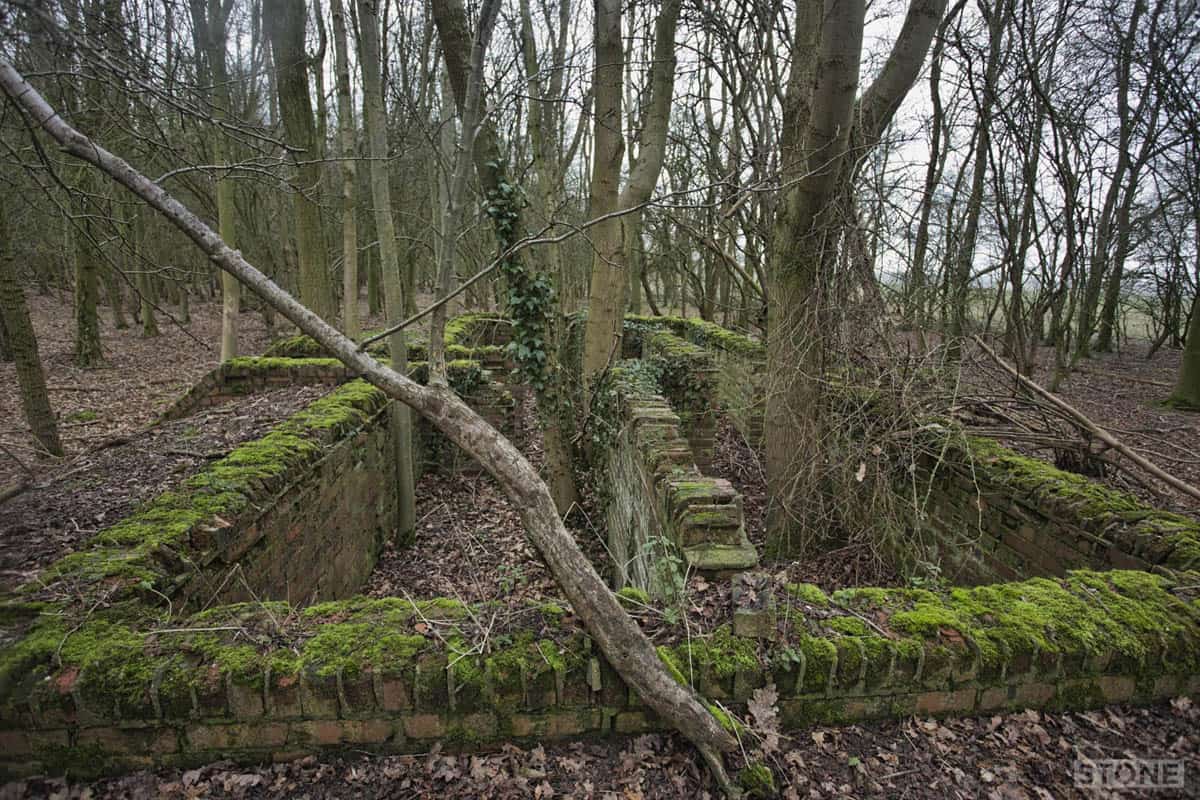
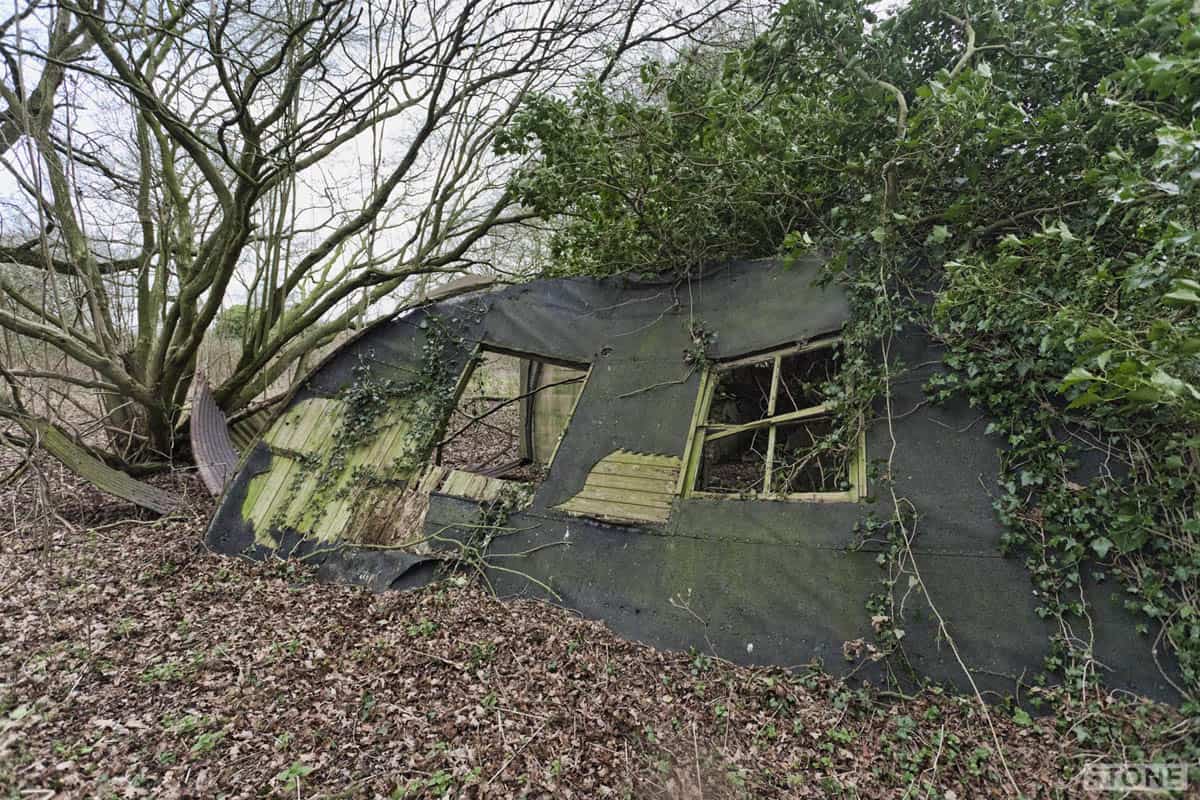

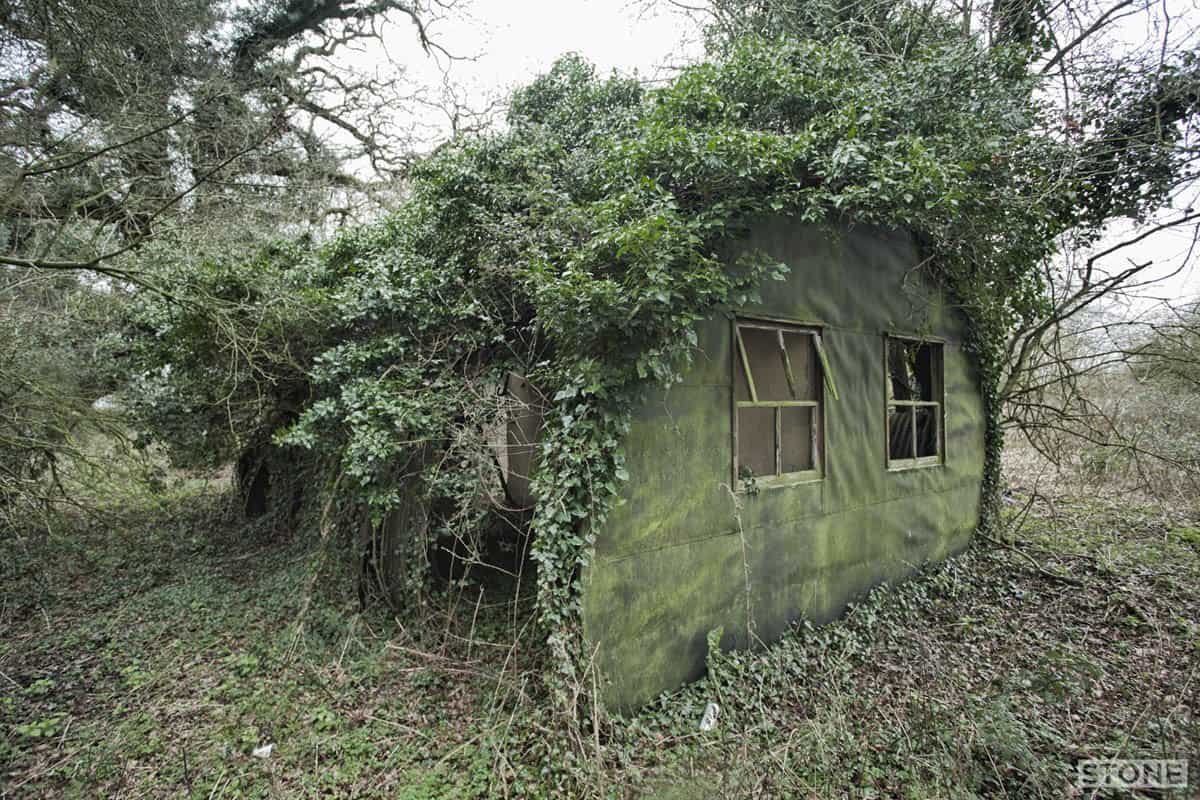
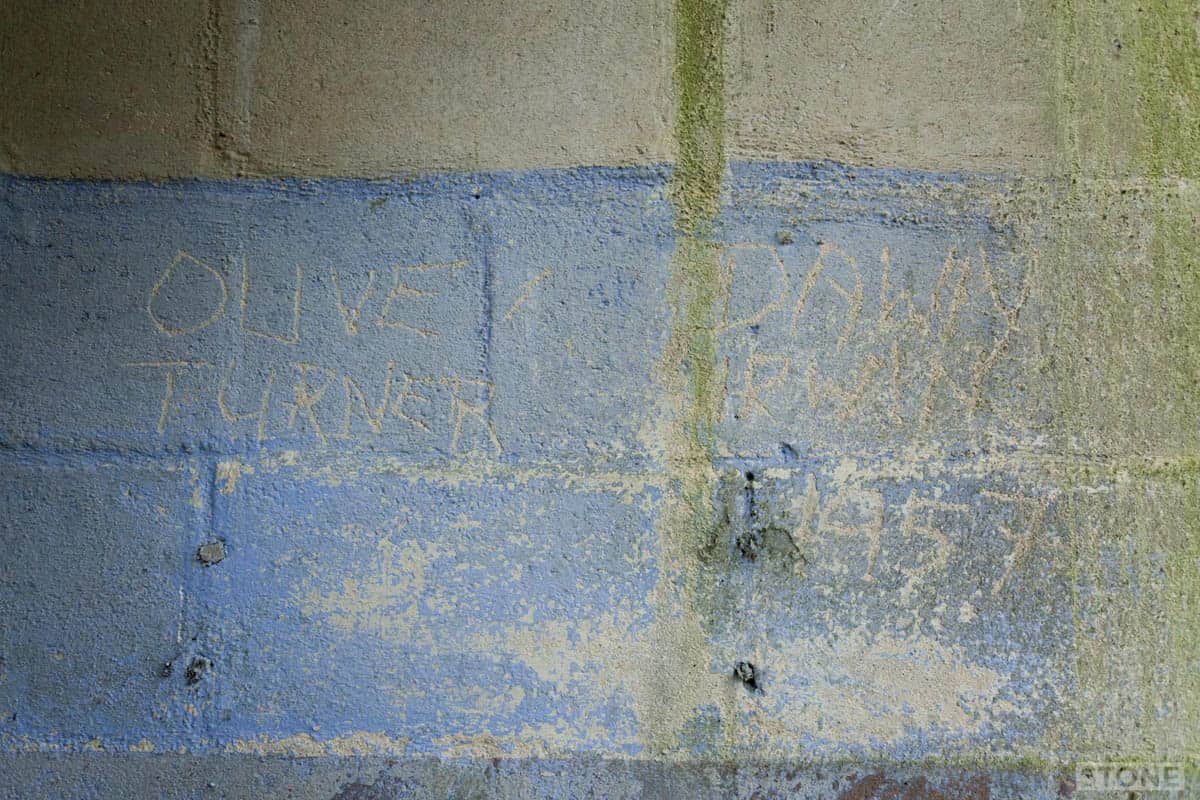

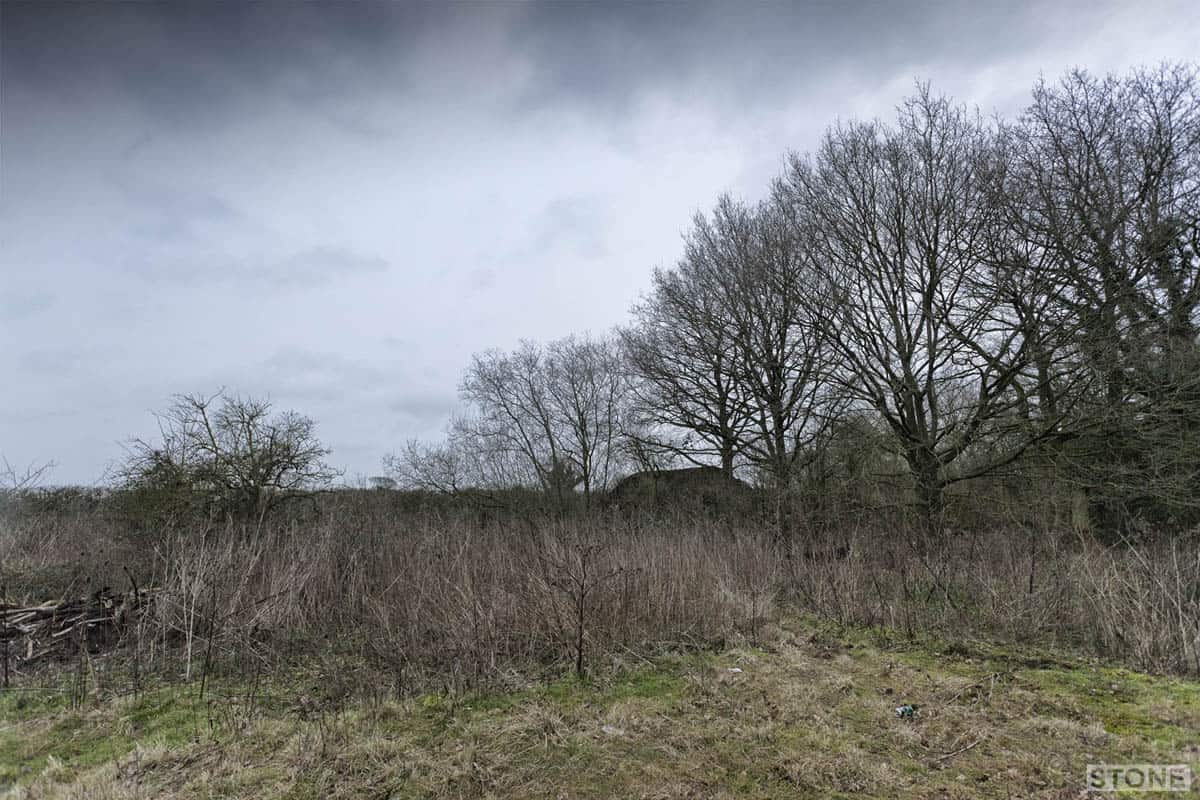
Photographs and text © Nick Stone 2014. Please email for permission to use or license.
Support Invisible works
Running Invisible works involves considerable outlay, hosting alone costs hundreds of pounds a year. It will remain free with no advertising for as long as I can manage it. If you feel like donating a few quid towards running costs to support it you can do so here.
Buy my work
You can also support the site and get something out of it for yourself by buying some of my work. I try to keep things affordable, there are plenty of options available with prints being expanded into new areas with books and posters also available.
Follow me on Instagram
I put a fair bit of my new work on instagram in various guises. My main account for photography is @nckjstn, but I can also be found mending things, restoring vintage finds and antiques, and making miniatures on my other account @typejunky.

Fascinating as usual Nick – and love the spooky, mournful pictures – particularly the hairy green man (Nissen hut) 4th from bottom.
Cheers
H
@HuwSayer
Nick, Thank you so much for the stirring images of Thorpe Abbotts Air Station 139. My late father, Technical Sergeant Conley E. Culpepper, was one of the thousands of young American flyers who knew that place. From September 1944 through February 1945, it was a sanctuary for my father and his 8 crew mates who eventually completed 35 combat bombing missions before they earned the right to go home. Although I have never been there, it holds special meaning for me, and it is a destination I hope to one day visit with my own son (named after my father). One image of yours in particular stood out to me. I have a photo from my father’s time there that is almost a spot-on match — the same terrifically unique tree bears witness, as does the edge of the Nissan hut — standing strong and rust free in his — yet reduced to a husk in your photograph. I’d love to share it with you, if you’re interested. Again, you’ve done an important service by documenting this site, and you have done it artfully and with spell-binding images.
Hi Chip, I’d love to see it and anything else you have too, particularly memories. I believe both Andrew MacDonald and Waveney Community Archaeology would also be thrilled too. I’m pretty sure the museum would be too. Thank you. I’ll email you tomorrow.
Great comment Chip, and an interesting story, I hope you are able to fulfil your wish one day soon. My half brother flew from North Creake on the last RAF bombing raid of WW2. Sadly, his bomber and another collided over the target and all but 3 of both crews perished—5 days from wars end. I’m pleased to see that the North Creake base is being restored to some degree, and the control Tower turned into a fully repaired and furnished Bed & Breakfast holiday place. There is a video ‘walk about ‘ look at the place on You Tube. regards –Phil.
These pictures are so beautiful . Thank you for sharing them with us !
Lived in Norfolk in 70s and always liked the atmosphere of old airfields. You seem to have captured the moods and I like the use of B&W images too. Keep it up, you’re doing good..
Great article and pictures. I visited the contol tower museum back in 2015, but there was no mention of these buildings. Strange that they were not aware.
Great pictures, i live round there and have visited the museum many a times, i have never seen any of the buildings before, as Lee said they have not been mentioned, there are no pictures in the museum.I have only seen one building which is a remarkably in-tact shelter east of the museum in a forest, assuming is a hide out for soldiers in an attacking, they would have to run across a field into the forest. Are the buildings located south-west in the forestspast the runways, would love to hear back. The old pictures are fascinating!
Very cool! I plan on visiting Thorpe Abbotts during my next visit to the UK on August 24-29. I am past president of the 306th Bomb Group Historical Association and therefore will be staying at The Swan in Bedford near the 306th Museum at Thurleigh.
Excellent piece of work, brings back lots of memories of wandering around Thorpe Abbott’s airfield when I was a lad in the late 60s early 70s. All the runways were still intact then. I had an old Ford Prefect van which we used to roar up and down the main runway in – until it ran out of petrol, then we had to cycle to Scole and the nearest petrol station, then back again for another hours fun of whizzing around, brilliant times.
Thank you for sharing your photos!
I also will be planning a trip to visit in the next couple of years.
My Grandfather was stationed there, Sgt. William (Bill) McClelland BTG with Just-A-Snappin crew.
Very cool, thanks!
Shelly Johnson McClelland
Hi, Nick,
I am writing a novel in which the 100th BG features prominently. I am particularly interested in life at Thorpe Abbotts. I want to find out as much as possible about the base hospital: its size, complement, capabilities as well. I have reviewed the Museum site and contacted them with not much success. I am hoping you may have some other sources.
I was an operating room technician at a small surgical hospital in Vietnam, 6/69-6/70. We received wounded directly from the field, did stabilizing surgeries and shipped them on. I imagine that the work done at Thorpe Abbotts on the flight crews was similar but any additional information available would be very helpful.
Thanks.
Formerly of the 45th Surgical Hospital, Tay Ninh, Vietnam
The ethereal shapes that the mind connects with energy and soul from a time created by people whose lives hung on a thread. Thorpe Abbots,
a place of such pain laminated with natures beauty as fresh blossom which comes and then fades with regularity.
Around Suffolk such places proliferate you are never more than five miles away. Each site unique with its painful past still vibrantly present.